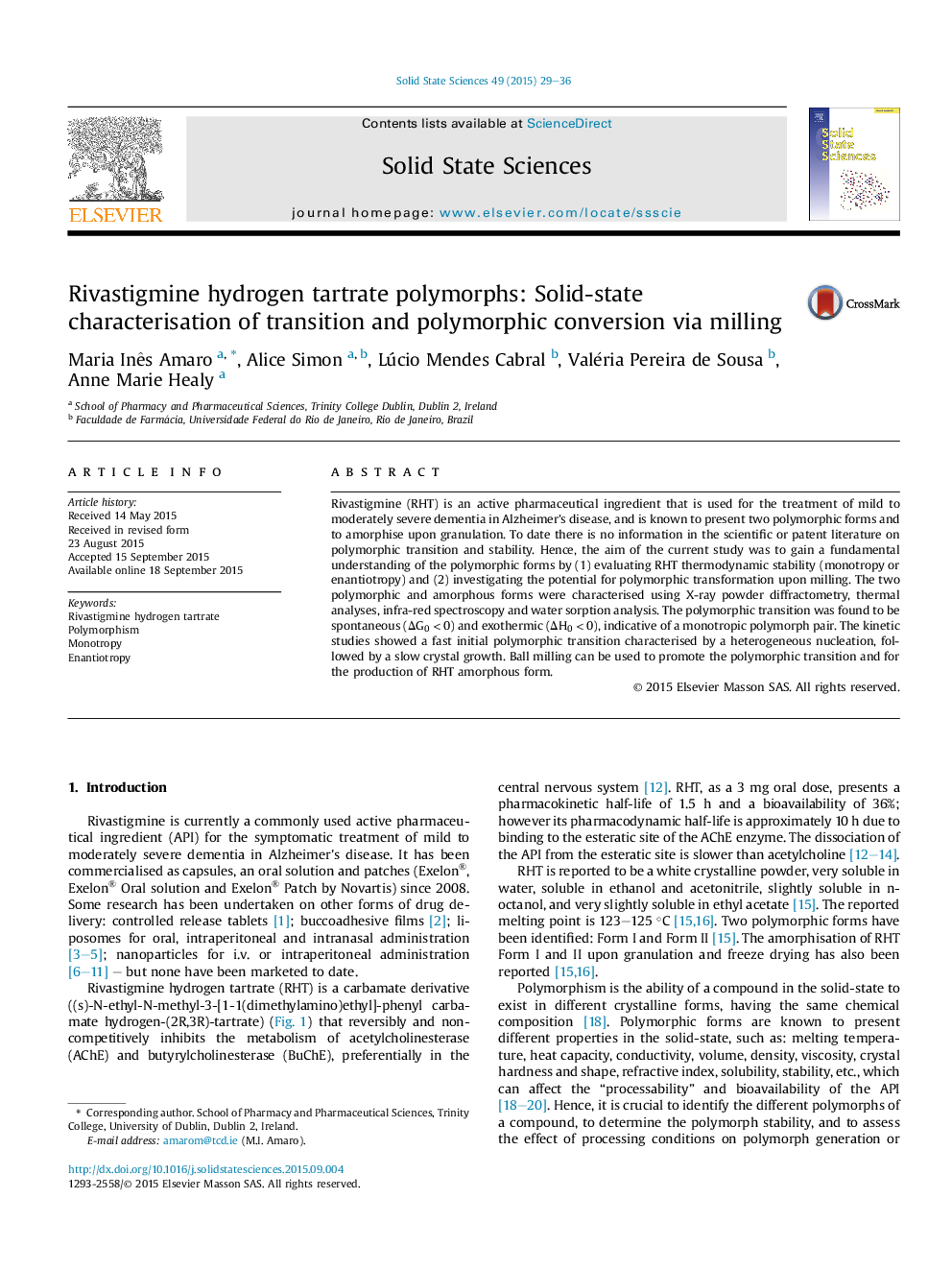| Article ID | Journal | Published Year | Pages | File Type |
|---|---|---|---|---|
| 1504174 | Solid State Sciences | 2015 | 8 Pages |
•Full thermodynamic characterisation of rivastigmine hydrogen tartrate polymorphic transition is presented and classified.•The transition Form II → Form I is a spontaneous and exothermic process, hence polymorphs comprise a monotropic pair.•Kinetic studies showed fast initial polymorphic transition with heterogeneous nucleation, followed by slow crystal growth.•Ball milling is proposed as a process to achieve amorphisation and polymorphic conversion of rivastigmine hydrogen tartrate.
Rivastigmine (RHT) is an active pharmaceutical ingredient that is used for the treatment of mild to moderately severe dementia in Alzheimer's disease, and is known to present two polymorphic forms and to amorphise upon granulation. To date there is no information in the scientific or patent literature on polymorphic transition and stability. Hence, the aim of the current study was to gain a fundamental understanding of the polymorphic forms by (1) evaluating RHT thermodynamic stability (monotropy or enantiotropy) and (2) investigating the potential for polymorphic transformation upon milling. The two polymorphic and amorphous forms were characterised using X-ray powder diffractometry, thermal analyses, infra-red spectroscopy and water sorption analysis. The polymorphic transition was found to be spontaneous (ΔG0 < 0) and exothermic (ΔH0 < 0), indicative of a monotropic polymorph pair. The kinetic studies showed a fast initial polymorphic transition characterised by a heterogeneous nucleation, followed by a slow crystal growth. Ball milling can be used to promote the polymorphic transition and for the production of RHT amorphous form.
Graphical abstractFigure optionsDownload full-size imageDownload as PowerPoint slide
